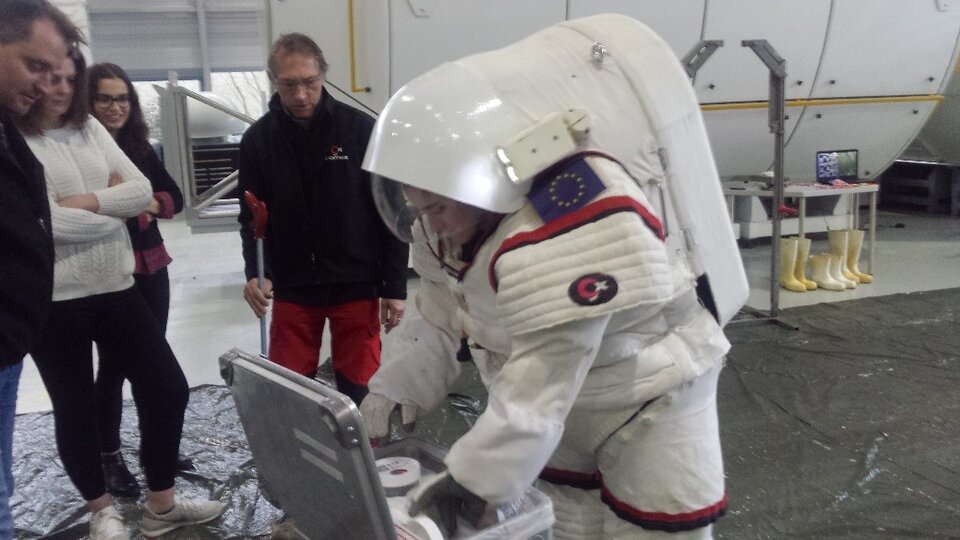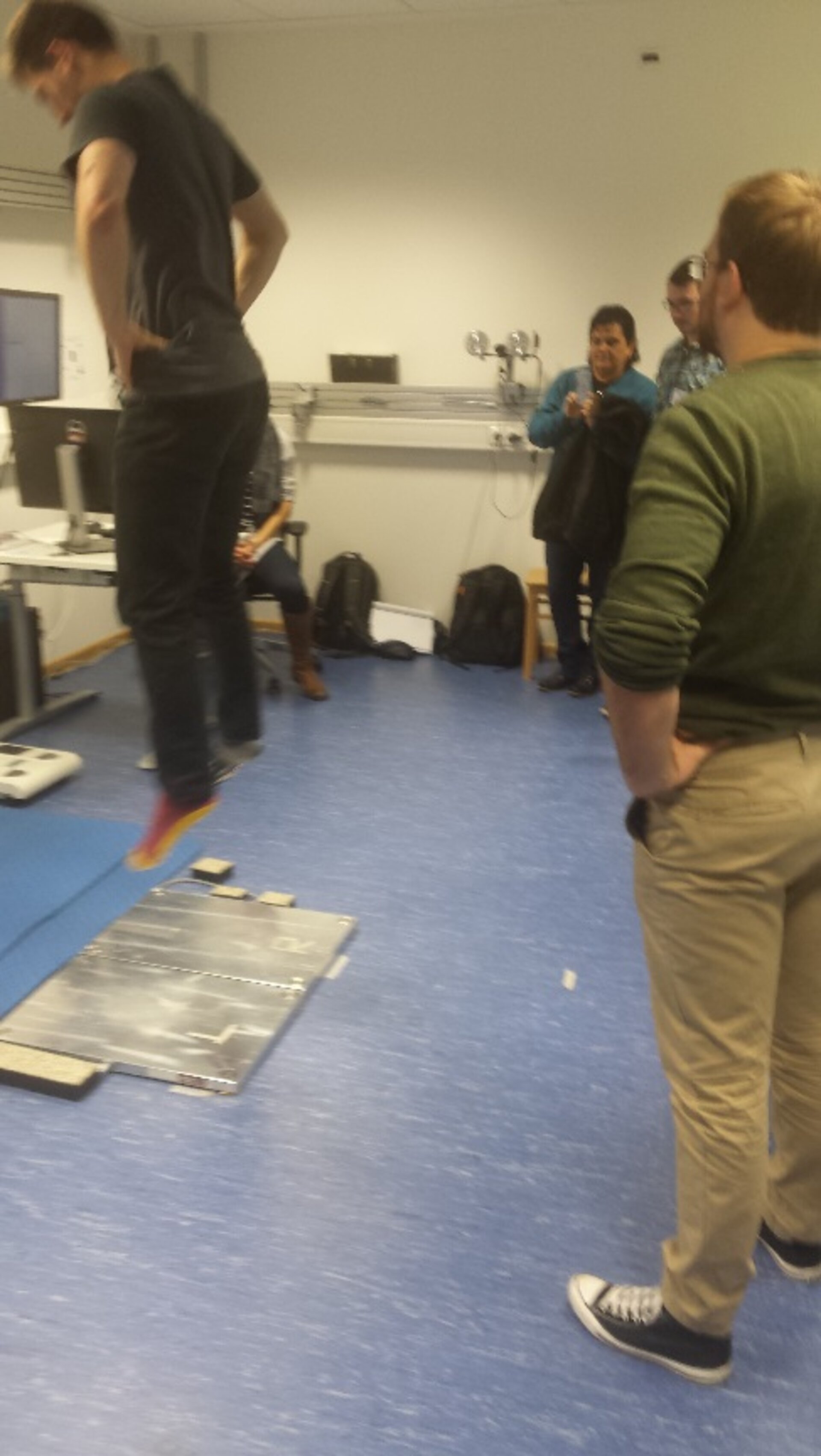The EAC hosts the Space Health training course for Medical, MSc and early-PhD students from key academic partners from across Europe
In Feb 2018, students from King’s College London, DLR German Aerospace Center, Paris Research Lettres, Aachen Medical School, and the Deutsche Sporthochschule Köln were welcomed to the European Astronaut Centre (EAC) for the Space Health training course. As part of the Space Health training course students were given an insight into:
- - Space Medicine operations
- - Astronaut payload training
- - The use of current and potential exercise countermeasures
- - Some of the challenges facing long term human lunar exploration
Students got the opportunity to not only learn from experts in space medicine, medical astronaut support, astronaut payload training and life sciences but also Frank De Winne, current Head of the EAC and former commander of the International Space Station.
Lectures were complimented by a range of hands-on astronaut payload training sessions relating to physiology experiments implemented on the ISS, which students then presented in teams to the group in addition to being put through their paces in a session of post-flight rehabilitation and elements of the of astronaut fitness assessment. Students were also introduced to ESA’s medical operations console, the training hall and the Neutral Buoyancy Facility used for spacewalk training.

This was complimented by a practical experience of conducting a rock sample retrieval task on the lunar surface whilst wearing Comex’s Gandolfi Lunar simulator spacesuit.

Furthermore, in partnership with DLR’s Aerospace Centre students were treated to a tour of envihab – a world-class research facility, took part in data collection up to 3G using the unique envihab short-arm centrifuge, experienced barometric decompression and ran a mini-experiment using ESA’s Verticalised Treadmill Facility to estimate what may be the ‘preferred’ walk and run speeds on the Moon and Mars.

One of the key objectives of the course was to highlight the various routes into a career within the space industry. Thus, students heard from contractors, integrated team and ESA staff members about their experiences and how some started their journey as EAC interns!
Excellent feedback was received and thus, following the success of this year’s Space Health training course the Space Medicine Team are already in discussion with partners to help inform, inspire, and integrate even more students from across Europe into meeting the challenge of supporting Human Spaceflight.


